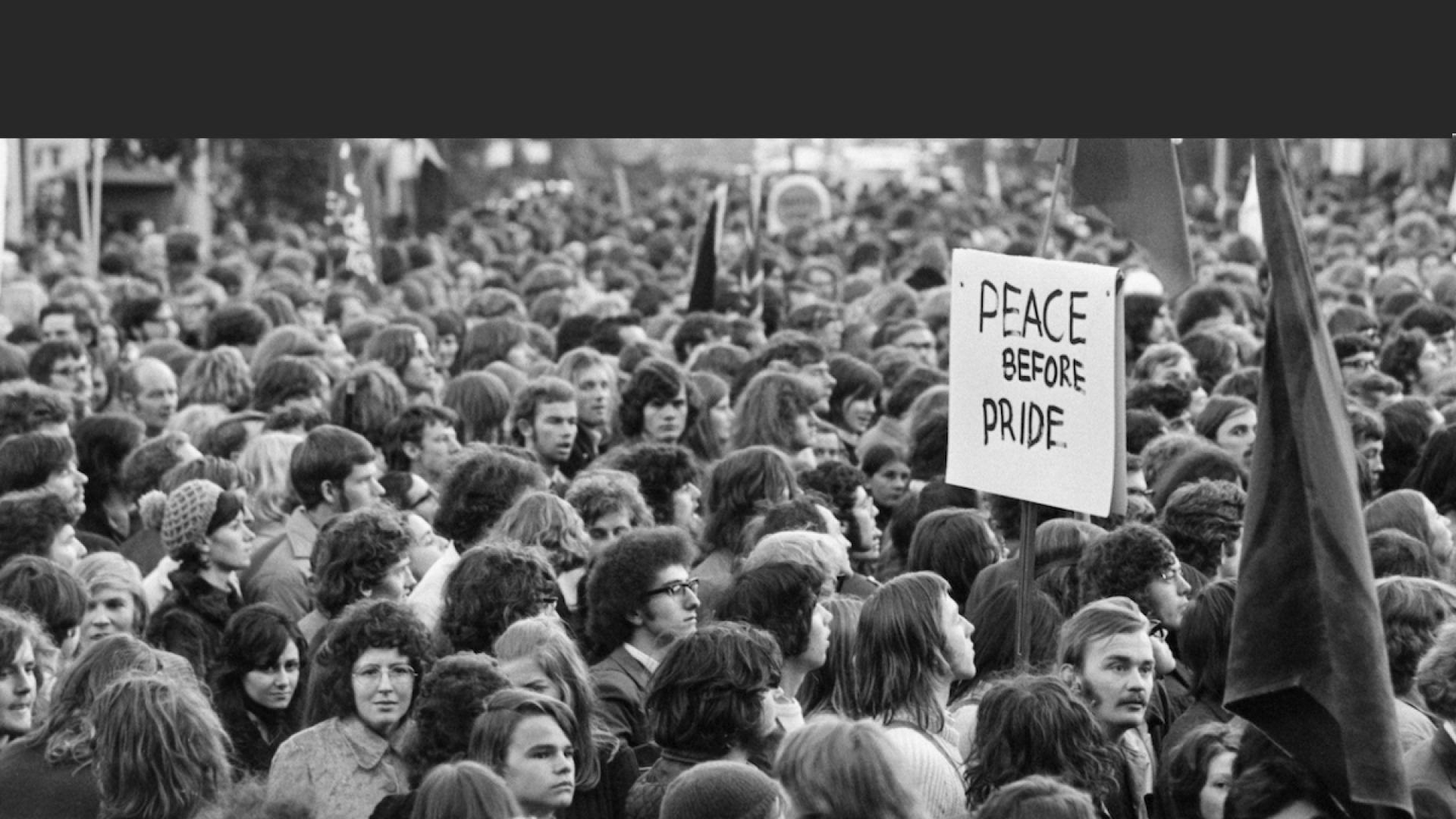By Liam Byrne
The 14th Biannual Labour History conference, “Fighting Against War: Peace Activism in the Twentieth Century,” made a positive start to this year of commemoration, raising vital questions concerning war, its opponents, and its legacies, from both scholarly and activist-oriented perspectives. Taking place at Queens College, University of Melbourne, delegates from across the country gathered over three days to participate in a wide variety of discussions on these crucial topics.

The three keynote speakers, all of great renown and accomplishment, provide ample examples of the issues questioned and debated at the conference. Professor Marilyn Lake spoke at the conclusion of the first day’s proceedings on Australia’s foundation narratives, and the competing concepts of egalitarianism and militarism within pre-war political thought. Challenging the prevalent idea that the Australian nation was born in the sacrifice of that ill-fated campaign, Professor Lake examined the spirit of egalitarian and democratic experiment following federation that ground to a halt during the war years.

Day two was capped with a presentation from Professor Bruce Scates, drawing upon his work with Monash Universities “100 Stories” project, tracing the experiences of one hundred of those who served during the First World War. Professor Scates provided a powerful example of how the war and its devastating effects can be remembered through utilising the stories of individuals irrevocably changed by the conflict – those who went, and those who stayed behind – challenging mythologies that seek to sanitise its effects. His was a poignant reminder of the power of history to challenge such mythologies and return a voice to those who experienced history personally.
The third day began with the final keynote address from Professor Verity Burgmann and her discussion of radical opponents of the war. She analysed the role of the Industrial Workers of the World as the radical flank of labour that enabled political space for the development of the more moderate movement against conscription. In this, she provided an important historical reminder of the contribution of those prepared to stand by their principles in times of crisis, and the potential this has to transform the state of politics.

These three keynotes were stand-out representations of the important discussions taking place at the conference. But, of course, a conference of this size and stature included many more contributions from a variety of perspectives around the topic of “fighting for peace.” A simple listing could hardly do justice to the many highlights throughout the days. However I would mention the opening session that I was lucky to participate in discussing “The War’s Beginning.” Every seat was taken and there were plenty of participants standing in the back row to kick start the conference with three papers exploring responses to the outbreak of war. Douglas Newton spoke about the International Women’s Movement’s opposition to the war, Graham Willett about opposition in Australia, and Andrew Bonnell about protests by the German workers’ movement. These three excellent papers encouraged a flurry of questions as this vital question of response was considered and debated. There was an atmosphere of friendly questioning, a desire to know more, and to dig deeper, to draw connections between these topics. It is worth mentioning as this atmosphere of comradely debate and inquest was a hallmark from that session to the last, inspiring an enthused atmosphere amongst participants.

Perhaps this atmosphere was aided by the strong postgraduate contingent at the conference, with graduates from a variety of campuses speaking throughout. It is a mark of Labour History’s strong ethos of participation and egalitarianism that postgraduates, and non-academics, were without a doubt so centrally involved in the life of the conference, a little sign of what it is that makes such meetings so unique, and so important.
Particular note needs to go to the good deal of hard work put into ensuring that the conference went as fantastically as it did, a great credit to conference organisers, Julie Kimber and Phillip Deery. Both acted in addition as editors of the conference book, which contains fifteen peer-reviewed chapters drawn from papers presented at the conference itself. This is an enduring record of the important discussions that took place, and of the hard work that they both put into making every facet of the gathering a success.

Around the formal gathering were a variety of stalls and activities. Notably, a guided tour of the famous personages who rest in the Melbourne Cemetery, across the road from the college. Led by Peter Love, raconteur-in-chief of the Melbourne branch, and lifelong unionist Albert Littler, this tour gave life to the cemetery’s history. Mention should also go to the generous gift of voice provided by the Trades Hall Choir, which regaled delegates before and during the conference dinner with songs of the movement, including those composed by Choir members themselves, in a particular poignant moment of these three days.

The University of Melbourne Archives also provided their support to the conference, accommodating a special display of material from the campaigns against conscription in 1916 and 1917. The exhibition was curated by Katie Wood, with a little help from me, and aimed to bring participants closer to this crucial period of protest that was so defining to Australian history – including a copy of the labour newspaper Labor Call from the campaign and both its censored and uncensored versions.
2015 will be a crucial year for commemoration, and discussion on Gallipoli, its meaning, and its effects on how Australia comprehends itself as a nation. All those who participated in this 14th Labour History conference can be proud to have been part of such an exciting and enriching event, aimed at contributing to this discussion, and protecting the legacies of those vital points of resistance that otherwise would risk going unremembered.
Liam Byrne is a PhD Candidate in the School of Historical and Philosophical Studies at the University of Melbourne. His research focuses on the political culture of the Victorian Labor Party between 1914 and 1921.
Conference photographs by Peter Love/Susanne Provis.
